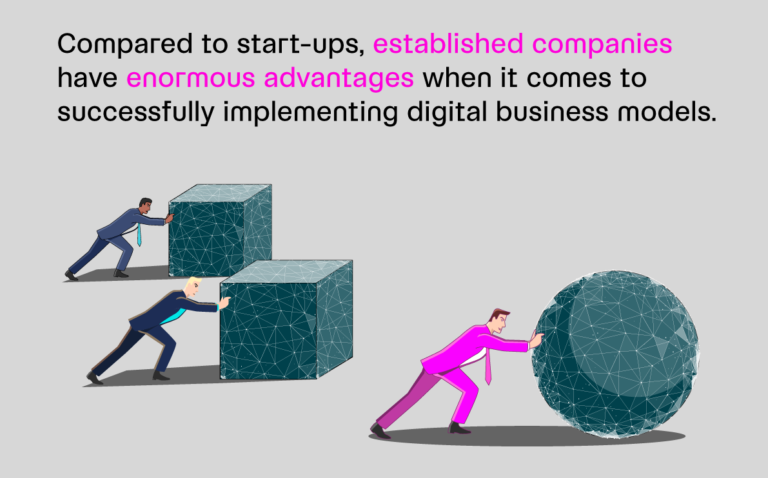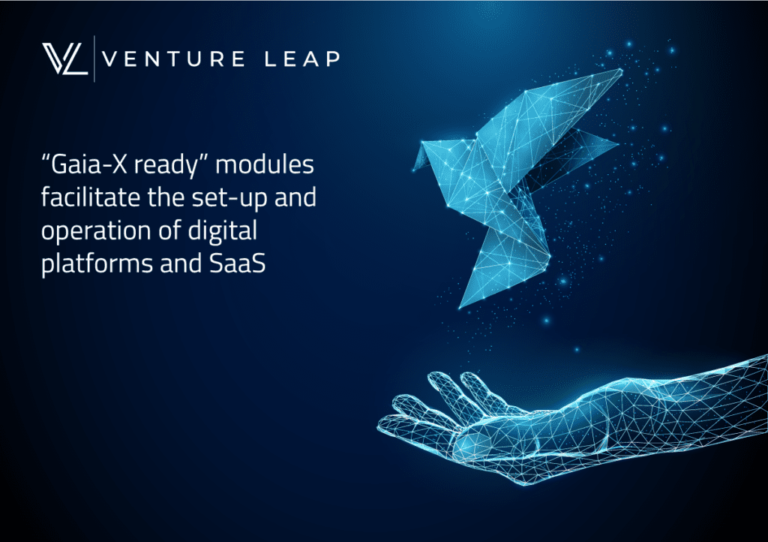Now it´s time for digital product development. We’ve come a long way from “websites.” Whereas before a company’s digital web presence was little more than an online resume, possibly paired with a blog and some e-commerce functionality, today digital experiences have become products unto themselves.
From dating apps to customer relationship management platforms, digital products shape the way we do business and live life, from the moment Alexa wakes us up, to the moment the Calm app lulls us to sleep.
Are you a startup with a fantastic idea for a digital product to bring to the market? Or an enterprise that envisions a proprietary digital solution to an efficiency bottleneck? The possibilities are tempting … but the task can also seem daunting.
How does a digital product come to life, from an idea on paper to a practical reality? Where do you even start? Is there a uniform roadmap to digital product development, or do you have to reinvent the wheel with every new idea?
Fortunately, despite the vast range of digital products out there, those who have come before you have left a trail of breadcrumbs. While each product is different, digital product creation follows a predictable chain of steps.
Here are the six phases of digital product development …
1. Discovery
The discovery phase is one of the most critical stages of digital product development, and yet many aspiring digital product developers skip it. This choice is to their peril, because the discovery phase reduces risk and uncovers problems before resources are committed.
Discovery is the process of identifying the problem to be solved, making sure the problem is worth solving, and envisioning the solution to that problem.
The reason some developers skip the discovery phase is because they think they already understand the problem, overestimate the value of solving that problem, or they become attached to a solution that doesn’t fit the problem. Missing the mark on any of these can cause the resulting digital product to fail. Alternately, taking the time to fully understand the problem can lead to paradigm-breaking solution brainstorms that never would have happened if you skipped discovery.
So how does an entrepreneur or a team discover a problem that needs to be solved by a new digital product? There’s no one right answer, but brainstorming products worth solving could include any or even all of the following:
- Stay Alert in your Everyday Life. It’s hard to find a problem that no digital product has attempted to solve, but anything that bothers you might be pointing you in the direction of a problem that no one has ever thought to solve.
- Find a Way to Improve an Existing Product. Most problems may already have a digital solution on the market, but if you see a way to solve a problem in a better, more efficient, or more user-friendly way, you could be onto something. The fact that a product already exists to solve the problem is a good indicator that someone thought it was worth solving.
- Create a Unique Selling Proposition. A unique selling proposition, or USP, is a variation on an existing product that will attract a certain share of the market to your product. Could you create a cheaper version? A luxury version? An automated version?
- Research Trends. Consumer trends like eco-friendliness, social justice, plant-based diets, fitness, or supplementation could suggest directions to take your product brainstorming.
2. Ideate
The goal of the ideation phase of digital product development is to brainstorm possible solutions to the problem identified in the discovery phase, creating a strategy for how to build a product that will solve that problem.
Of key importance is discovering the problem-solution fit. Having taken the time within discovery to fully understand the problem, you can start brainstorming solutions that fit the problem, rather than starting with a solution that might not fit the problem.
Identifying solutions to nurture into products can take on several forms. You might try any one of the following:
- Brainstorming. Get together a cross-functional team and leverage group brain power by bouncing ideas off of each other. Keep the group diverse, but not too large. Amazon uses the “two-pizza” rule, limiting brainstorming sessions to teams that can be fed by two pizzas.
- Prototyping. Physical products are often prototyped, but digital products can be prototyped too in the form of a non-functional model version that allows stakeholders to visualize the final product.
- Storyboarding. Storyboarding is well-known in the movie industry, but by drawing the user’s interaction with the product as a story with a beginning, a middle, and an end, you can tease out game-changing features to add.
- The Five Whys. Popularized by Toyota, the “Five Whys” analysis involves starting with the statement of the problem and then asking at least five sequential “why” questions in response to the statement, with each why springing from the previous “why.” The goal is to get at the root essence of the problem.
- Method 6-3-5. Meant to get the creative juices flowing, 6-3-5 involves a team of six people writing down three ideas in five minutes, then passing the results in a circle around the table so the other five team members can add on to each idea.
3. Test
After brainstorming solutions in the discovery and ideation stages of digital product development, you should emerge with your eyes on the best probable solution to that problem, and an idea of how to create a product to effectuate that solution.
Now we move into the testing stage of digital product development. The testing phase is all about gathering data, refining and improving your idea, and gathering more data until you have the idea honed so sharply that it can cut glass.
Your hypotheses from the discovery and ideation phases of digital product development are just that—hypotheses. Now it’s time to take your assumptions to the target market and validate them. The testing phase should involve at least four steps, known as the lean validation process …
- Validate the Problem. Does the target market agree that the problem is worth solving?
- Validate the Market. Is the market for the product robust enough to justify the development project?
- Validate the Product. Does your product actually solve the problem?
- Validate Willingness to Pay. Is the target market willing to pay a price for a solution to this problem that would justify developing the product?
How do you go about executing this kind of validation of your hypotheses? Two important tools are landing pages and customer interviews.
- Landing pages are simple pages built to test a single hypothesis. For example, a landing page could validate the market by seeing how much traffic the page drives. It could also validate willingness to pay by seeing how many visitors convert with a “checkout” or “buy now” button.
- Customer interviews are not perfect representations of how consumers will behave behind closed doors, but they can go a long way toward validating the problem and the product by getting close to your target market, discovering their needs and frustrations first-hand.
4. Execute
You’ve done your homework through the discovery, ideation, and testing stages of digital product development, validating your ideas with real-world data. Now it’s time to move to the execution phase.
This is a stage where you develop your MVP. This isn’t the “most valuable player” … MVP, in the context of the phases of digital product development, means minimum viable product. As the name suggests, it is the product with the bare minimum of features and functionality needed to solve the problem identified in the discovery phase and validated in the testing phase.
The reason to do an MVP rather than wait until the product is “perfect” is to cut down the learning curve and get early customer feedback. In some ways, the MVP will be the ultimate testing vehicle, gathering feedback you can use to refine the product in the race to its final form. A strong MVP may even capture VC imaginations and attract investment.
5. Launch
Once your MVP is ready to go, it’s time to launch. A digital product launch usually means putting your MVP on the market and giving customers their first crack at your solution.
You could take several approaches to this launch:
- Soft Launch—The MVP is made available to a limited segment of the target market, known as “early adopters.”
- Hard Launch—The MVP is made available to the market at large with a full marketing push (not recommended for MVP launches).
- Dark Launch—The MVP has already been launched, but new features get a “dark” launch to a select percentage of users to test their behavior in reaction to the new feature.
6. Grow
As you refine the digital product into its final form, based on the feedback from the MVP launch, it’s time to consider the growth or scaling phase. One of the reasons to do an MVP before a full product launch is so that your product has room to grow and scale.
The tasks relevant to this phase include:
- Collecting and Analyzing Feedback. Your customers’ interaction with the MVP will provide valuable data you can use to improve the digital product.
- Preparing to Scale. This is basically preparing for success. If you had 100,000 orders overnight, could you handle that? Shore up automations, SOPs, scalable cloud services, and support staff contingencies in the event that you need to go big, fast.
- Zeroing in on the Optimal Price. Your MVP data could suggest that you got the price a little too high, or even too low, especially with added features.
- Scaling Up Marketing. Your MVP leads can serve as valuable customer personas to create lookalike audiences to market to.
- Testing and More Testing. Phase 3 really never stops. At every stage of growth, keep validating your old hypotheses and your new ones to make the product as viable as possible.
Final words
Again, no two product development cycles will execute these phases of digital product development in an identical way. However, by planning for each of the six stages of digital product development, you can set up your product for success.

Dr. Daniel Werner –
Co-Founder Venture Leap
Let’s talk about your project!
At Venture Leap, we help entrepreneurs realize their vision – Let’s chat about how you can go from an idea to a marketable MVP in 3 months!




